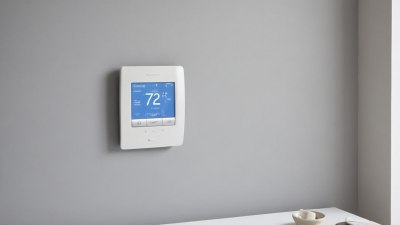How a Sudden Drop in Temperature Sparks Existential Style Crises
Explore how sudden temperature drops can lead to existential style crises and impact fashion choices.

As autumn descends, the balmy days of summer rapidly retreat, ushering in a stark drop in temperature that many dread. While this seasonal transition brings a plethora of changes, the ramifications stretch beyond mere weather patterns; it often leads to what can be termed as an 'existential style crisis.' This phenomenon encapsulates a unique interplay between climate, personal identity, and fashion choices.
The initial cold snap can be startling. In many regions, it can feel as if the thermostat has been abruptly dialed down, leaving fashion aficionados scrambling to adapt their wardrobes. It’s easy to dismiss this feeling as mere seasonal discomfort, but for many, it taps into deeper wells of self-perception and identity. With every turn of the weather, questions of how we present ourselves and the choices we make about our clothing bubble to the surface.
The Interplay of Temperature and Mood
There's a well-documented connection between temperature and mood. Studies have shown that colder temperatures can evoke feelings of melancholy or introspection. When faced with a sudden chill, individuals often find themselves not only reconsidering their outfits but also pondering their identities. Am I still the vibrant summer person I was just weeks ago? Or has the cold turned me into a subdued version of myself?
This internal struggle can manifest stylistically. Destroyed jeans and light tank tops give way to bulky sweaters and layers of outerwear. The shift is more than just functional—it's emotional. There's an inherent need to communicate resilience and adaptiveness to the elements. This can lead to a complete wardrobe overhaul, where past styles are scrutinized, and new choices feel imperative.
Cultural and Societal Influences
Cultural influences play a sizeable role in how we respond to seasonal changes. Many Western societies embrace a 'summer identity’ characterized by vibrancy and color, while winter and fall signify connection to darker palettes and heavier fabrics. This binary can feel constricting for some— especially those who thrive in warmer months. The dread of falling into a 'winter rut' or appearing unoriginal can create pressure to acquire new pieces that feel like an authentic representation of self amidst the cold.
Moreover, social media amplifies these tensions. As we scroll through feeds filled with impeccably styled outfits and curated aesthetics, the abrupt shift in temperature can prompt a desire to not only keep up but redefine one's style in response to external pressures. However, what happens when one's identity and authentic voice become fragmented or overshadowed by fleeting trends? Does the way we dress fully encapsulate the depths of who we are?
Existential Style Crises Unpacked
An 'existential style crisis' emerges when one feels their clothing doesn't resonate with their true self. Perhaps a colorful summer wardrobe feels jarring against the backdrop of a grey, cold day. This dissonance forces many to confront identity. Are we defined by our clothes? To what extent do we allow ourselves to reflect the season or instead strive for continuity? Many individuals start questioning what messages their clothing communicates. The weight of this realization can lead to both confusion and innovation.
In these moments, creativity often flourishes. A person grappling with their newfound winter identity might experiment with bolder layers, mixing textures to create a unique visual narrative. The intention becomes less about fitting in with an external aesthetic and more about embracing the multifaceted self. The opportunity to explore new styles becomes a radical act—the act of reclaiming individuality through seasonal adaptation.
The Embrace of Layering
Layering becomes both a practical solution and a stylistic statement during sudden temperature drops. Clothes transform into functional shields against the elements while simultaneously allowing for expression. Through the interplay of different layers, textures, and colors, individuals can craft a narrative that speaks to their evolving selves.
For example, a flowing summer dress can be easily transformed into a winter ensemble with the addition of tights, a structured blazer, and ankle boots. This act requires just enough creativity and risk to propel someone out of their comfort zone, thereby challenging the notion of how weather dictates psychological states and societal expectations. The ultimate question arises: can layering serve as a metaphor for inner layering? The fragility of self, often revealed during these transitions, prompts exciting ingenuity.
Retail and Its Role
Retailers often respond to such seasonal shifts by rolling out campaigns that emphasize the importance of a winter wardrobe. This can lead to purchasing anxiety for those grappling with their identity and exploring the subtleties of personal style. The lure of a new season can be enticing, but it comes with the pressure to update one's looks accordingly. Every advertisement screams the importance of staying chic in cold weather. The fear of showing up underdressed or, conversely, overdressed can lead to a deep style analysis, perhaps resulting in unintended purchases or style experiments.
Here's where mindful shopping strategies can empower consumers. By recognizing our patterns and addressing the crux of the existential crisis, we can make strategic choices that resonate. Selecting multifunctional pieces, purchasing classic items that withstand trend cycles, and embracing pre-liked favorites allows for stronger emotional connections to clothing. The shift from reactive shopping to strategic dedication can nurture a healing response to these harsh transitions.
Redefining Self Through Style
Ultimately, what does it mean to redefine oneself in the face of seasonal change? It is a journey of self-discovery - an exploration of how we wish to express ourselves against the backdrop of nature's dictates. Embracing deeper shades, heavier fabrics, and cozy accessories doesn't mean losing lightness or exuberance; instead, it's about incorporating those vibes into a new palette. Finding warmth in stylish comfort might just be the key.
Moreover, certain fashion styles echo warmth—chunky knits, rich textures, and comforting silhouettes can evoke a sense of safety and belonging. As the conversation changes from dressing to impress to dressing to express, we experience the duality of style: the comfort of being wrapped in our layers and the liberation of only needing to impress ourselves. This self-affirmation resonates strongly as we curate our looks each season.
Embracing Change
Change is hard; however, it offers the richest bounty for growth. The next time the weather takes a nosedive into frigid temperatures, reflect on your existential style crisis as an opportunity. This transitory moment signals a new chapter, ripe for experimentation. By embracing the deeply intertwined relationships of temperature, mood, and identity, we open ourselves to methods of expression unknown before. Approaching practical styles not merely as clothing but as wearable tales reflects our complex emotional landscape, illustrating that even amidst struggle, there is beauty in transformation.











